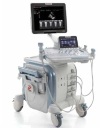Special report: CR and DR battle updates
by Carol Ko, Staff Writer | February 15, 2013
International Day of Radiology 2012
From the January/February 2013 issue of HealthCare Business News magazine
Dose of controversy
Even discounting efficiency, there’s at least one hot-button issue that’s tilted in DR’s favor: dose reduction. In 2009, 269 patients at Cedar Sinai Hospital undergoing CT exams received eight times the necessary radiation dose. The incident received coverage from major news organizations including the New York Times, resulting in widespread outcry from patient advocate groups.
In response to the controversy, California passed the Radiation Overdose Act, which requires that radiation dosage levels from CT scans and therapeutic X-rays used to treat cancer be tracked in patient health records. It went into effect on July 1, 2012. The incident has created wider ripples in the imaging industry as a whole, spurring greater public scrutiny and awareness over the use of dose.


DR machines offer a distinct advantage for the dose-concerned, as their detectors use less dose on average than CR machines and also offer more ways to adjust dose parameters depending on the type of exam. Consequently, Laupper sees a wave of growing interest in technology that provides dose reduction: "When you talk about technology to a radiologist today, they are also focused on the applied patient radiation dose – especially in hospitals, pediatric environments and imaging centers. I see the same importance being placed on radiation dose in the U.S. as it has been for years in Europe going forward.”
Siemens’ Fernandes agrees: “Dose is a really big topic right now. That’s part of why detectors are being widely accepted in the market. All CR vendors — if you look at Konica, Kodak/Carestream – there’s a reason why these companies are moving to detectors. Detectors use much lower dose compared to CR, and there’s a larger movement toward dose awareness. “
According to Fabrizio, more experts in the industry are pushing to build international standards that are accepted globally from one manufacturer to the next. Not only would radiologists in different countries calculate dose in the same way, but ideally, they would also be able to keep track of the total amount of dose that patients receive over their lifetimes.
Going retro
DR systems have another major workflow advantage that’s proved indispensible for high-volume hospitals: digital RIS lists. These lists provide instant access to health records, such as patient information and exam schedules, within the X-ray system. “These RIS lists populate the machine with kV and mA requirements and other technical parameters so all the technician has to do is point and shoot,” says Fernandes.
Dose of controversy
Even discounting efficiency, there’s at least one hot-button issue that’s tilted in DR’s favor: dose reduction. In 2009, 269 patients at Cedar Sinai Hospital undergoing CT exams received eight times the necessary radiation dose. The incident received coverage from major news organizations including the New York Times, resulting in widespread outcry from patient advocate groups.
In response to the controversy, California passed the Radiation Overdose Act, which requires that radiation dosage levels from CT scans and therapeutic X-rays used to treat cancer be tracked in patient health records. It went into effect on July 1, 2012. The incident has created wider ripples in the imaging industry as a whole, spurring greater public scrutiny and awareness over the use of dose.
Your Trusted Source for Sony Medical Displays, Printers & More!
Ampronix, a Top Master Distributor for Sony Medical, provides Sales, Service & Exchanges for Sony Surgical Displays, Printers, & More. Rely on Us for Expert Support Tailored to Your Needs. Email info@ampronix.com or Call 949-273-8000 for Premier Pricing.

DR machines offer a distinct advantage for the dose-concerned, as their detectors use less dose on average than CR machines and also offer more ways to adjust dose parameters depending on the type of exam. Consequently, Laupper sees a wave of growing interest in technology that provides dose reduction: "When you talk about technology to a radiologist today, they are also focused on the applied patient radiation dose – especially in hospitals, pediatric environments and imaging centers. I see the same importance being placed on radiation dose in the U.S. as it has been for years in Europe going forward.”
Siemens’ Fernandes agrees: “Dose is a really big topic right now. That’s part of why detectors are being widely accepted in the market. All CR vendors — if you look at Konica, Kodak/Carestream – there’s a reason why these companies are moving to detectors. Detectors use much lower dose compared to CR, and there’s a larger movement toward dose awareness. “
According to Fabrizio, more experts in the industry are pushing to build international standards that are accepted globally from one manufacturer to the next. Not only would radiologists in different countries calculate dose in the same way, but ideally, they would also be able to keep track of the total amount of dose that patients receive over their lifetimes.
Going retro
DR systems have another major workflow advantage that’s proved indispensible for high-volume hospitals: digital RIS lists. These lists provide instant access to health records, such as patient information and exam schedules, within the X-ray system. “These RIS lists populate the machine with kV and mA requirements and other technical parameters so all the technician has to do is point and shoot,” says Fernandes.
You Must Be Logged In To Post A CommentRegisterRegistration is Free and Easy. Enjoy the benefits of The World's Leading New & Used Medical Equipment Marketplace. Register Now! |
|











